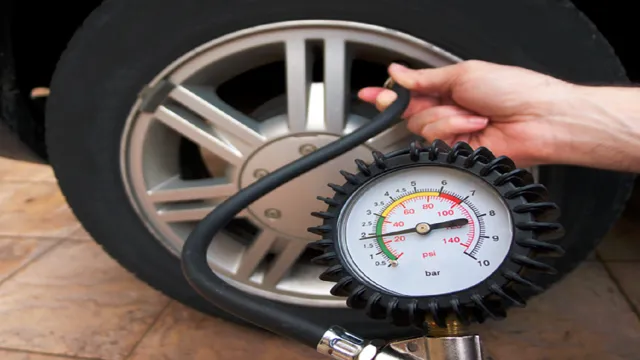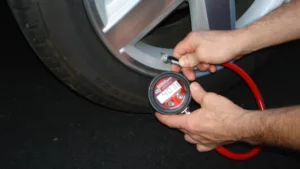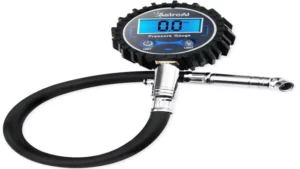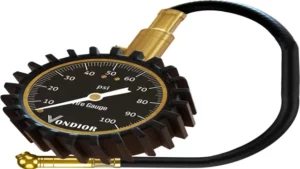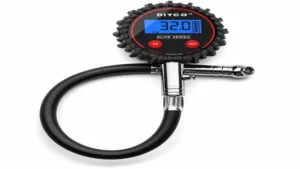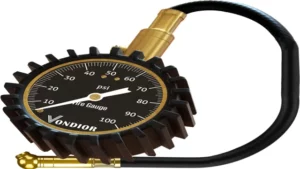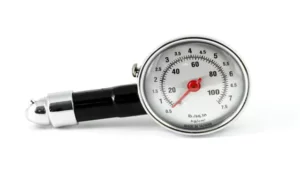Checking your tire pressure gauge is one of the most important things you can do to ensure your car is safe and running properly. A properly inflated tire will help you avoid accidents and save you money on gas. But do you know how to check your tire pressure gauge? It’s actually quite simple.
In this blog, we’ll show you step-by-step how to check your tire pressure gauge so that you can have peace of mind every time you hit the road. So, let’s get started!
Why Checking Your Tire Pressure is Important
Tire pressure is a crucial factor that affects your driving experience. Making sure your tires are properly inflated is important not only for your safety but also for the longevity and efficiency of your tires. Checking tire pressure is easy and can be done in just a few minutes with a tire pressure gauge.
Simply insert the gauge into the valve stem of your tire and read the pressure measurement. The recommended tire pressure can be found in your owner’s manual or on the driver’s side door jamb. Keeping your tires at the correct pressure can improve fuel efficiency, handling, braking, and reduce the risk of tire blowouts.
Overinflated tires can cause uneven wear on your tires resulting in premature replacement, while underinflated tires can have an adverse effect on your vehicle’s handling and stability. By regularly checking your tire pressure, you can ensure that your tires are always at the optimal pressure for your specific vehicle and improve your overall driving experience.
Improved fuel efficiency and handling
Checking tire pressure regularly is crucial to improve fuel efficiency and handling while driving. Low tire pressure can decrease your vehicle’s fuel efficiency, as it increases the rolling resistance, making your engine work harder, leading to more fuel consumption. Properly inflated tires can also enhance the handling and stability of your vehicle, preventing accidents on the road.
This simple task can also extend the life of your tires, making them wear evenly and last longer. It is recommended to check your tire pressure monthly or before long-distance trips, as weather changes and temperature fluctuations can affect tire pressure. Remember that tire pressure requirements vary depending on the vehicle’s make and model, so refer to your owner’s manual or the label inside your vehicle’s door for the correct pressure levels.
A few minutes of your time can make a significant difference in your safety and driving performance.
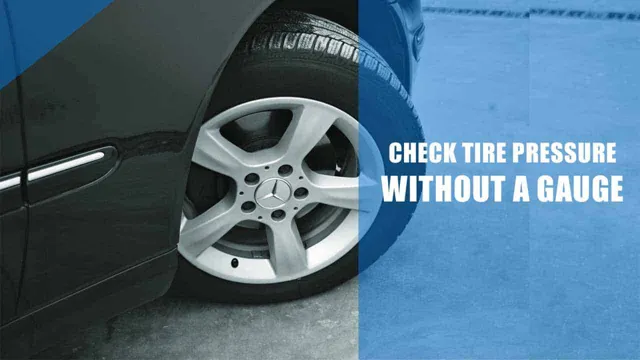
Increased safety on the road
When it comes to driving, safety should always be a top priority. One aspect of vehicle safety that is often overlooked is tire pressure. Checking your tire pressure on a regular basis is crucial in ensuring the safety of not only yourself but also your passengers and other drivers on the road.
Low tire pressure can cause a decrease in handling and braking capability, which can lead to dangerous situations, such as accidents or tire blowouts. On the other hand, overinflated tires can increase the risk of a blowout and also lead to poor handling. To avoid these risks, it’s recommended to check your tire pressure monthly and before long trips.
By doing so, you can increase your safety on the road and prevent any potential accidents from occurring. So, the next time you hop in your car, take a moment to check your tire pressure and ensure a safer driving experience.
Steps to Check Your Tire Pressure Gauge
Checking your tire pressure gauge is crucial to ensure your safety while driving. The first step is to use a tire pressure gauge to measure the amount of air in your car’s tire. Simply remove the tire’s valve cap and press the gauge firmly onto the valve stem until the hiss of escaping air stops.
The gauge will display the tire pressure. If the reading is too low, add air to the tire until it reaches the recommended level, which can be found in your car’s manual or posted on the driver’s side door jamb. If the reading is too high, release air until it reaches the recommended level.
Remember to always check your tire pressure when the tires are cool, as driving can increase tire pressure and give an incorrect reading. Regularly checking your tire pressure gauge can help you save money on gas and prevent unnecessary wear and tear on your tires, ultimately extending their lifespan.
Step 1: Gather Necessary Tools
When it comes to checking your tire pressure, the first step is to gather all the necessary tools. These include a tire pressure gauge, a tire inflation tool, and a tire pressure chart. Make sure that the gauge you choose is accurate and calibrated to provide the correct reading.
Avoid relying on visual assessments or guesswork, as these can lead to overinflated or underinflated tires, which can compromise your safety and the lifespan of your tires. Once you have all your tools at hand, locate the valve stem of each tire and remove the cap. Then, attach the pressure gauge to the valve stem and take a reading.
Compare this reading to the recommended pressure listed on the tire pressure chart, which is usually found in your car’s manual or on the inside of the driver’s door. Use the inflation tool to add or release air from your tires as needed until the pressure matches the recommended value. By following these simple steps, you can ensure that your tires are properly inflated and extend their lifespan.
Step 2: Check the Recommended Pressure
When it comes to checking your tire pressure gauge, the recommended pressure is an essential factor to consider. This information can usually be found in your vehicle’s owner’s manual or on a sticker inside the driver’s side door jamb. It’s important to note that the recommended pressure may differ for front and rear tires, so be sure to check both.
Once you’ve located the recommended pressure, use your tire pressure gauge to check the current pressure of each tire. If the pressure is too low or too high, adjust it accordingly, using either a hand pump or an air compressor. Remember that proper tire pressure is crucial for both your safety and the performance of your vehicle, so take the time to ensure that your tires are properly inflated.
Step 3: Remove Valve Cap and Press Gauge onto Valve
When it comes to making sure your car is running smoothly, checking your tire pressure is an essential step. And the good news is, it’s a task you can easily do yourself! So, let’s get started on step three: removing the valve cap and pressing the gauge onto the valve. First, locate the valve stem on your tire and unscrew the valve cap.
Then, firmly press the gauge onto the valve stem. You should hear a hissing sound as air escapes, but once the gauge is properly secured, the hissing should stop. Take a look at the gauge and note the reading – it should be within the range recommended by your vehicle manufacturer.
Don’t forget to check all four tires, as their pressures can vary. And that’s it – you’re one step closer to a safer, more fuel-efficient ride!
Step 4: Read the Gauge
Once you’ve attached your tire pressure gauge to the valve stem and released a burst of air, it’s time to read the gauge. It’s important to make sure you’re reading the gauge correctly to ensure your tires are properly inflated. Most gauges have a dial or a digital screen that displays the pressure reading in PSI (pounds per square inch).
Make sure to hold the gauge steady and level while reading the display. If the reading is below the recommended PSI for your tires, add air until it reaches the correct pressure. Overinflating your tires can also be harmful, so be sure to double-check the recommended PSI before filling them up.
Checking your tire pressure regularly can extend the lifespan of your tires and improve your vehicle’s performance and fuel efficiency. Happy driving!
Step 5: Compare the Readings and Add/Remove Air
In order to ensure your tire pressure is at an optimal level, it’s important to check it regularly using a tire pressure gauge. One key step in this process is to compare the readings you get from your gauge to the recommended level specified by your car manufacturer or tire brand. If your tire pressure is lower than the recommended level, you will need to add air to your tire until it reaches the ideal pressure.
On the other hand, if your tire pressure is too high, you will need to remove some air until it reaches the recommended level. This simple step can help you improve your car’s performance, increase fuel efficiency, and save money on repairs and replacements over time. So, next time you’re at a gas station or garage, take a few minutes to check your tire pressure and compare the readings.
You’ll be doing yourself and your car a big favor!
Tips for Maintaining Accurate Tire Pressure
Maintaining proper tire pressure is essential for safe driving, good fuel economy, and prolonging the life of your tires. So, how often should you check your tire pressure gauge? Experts recommend checking your tire pressure at least once a month and before any long road trips. To check your tire pressure, start by getting a quality tire pressure gauge – digital or analog.
Remove the valve cap from the tire and place the gauge on the valve stem. Press firmly to ensure a good seal and read the pressure displayed. Compare the reading with the manufacturer’s recommended pressure, which can be found in the owner’s manual or on the inside of the driver’s side door.
Inflate or deflate the tire as needed, always keeping within the recommended range. Remember, tire pressures fluctuate with temperature changes, so it’s essential to check your tire pressure regularly. By maintaining proper tire pressure, you’ll improve handling, save on fuel costs, and extend the lifespan of your tires.
So, make checking your tire pressure a routine part of your vehicle maintenance routine.
Check your tire pressure regularly
Maintaining accurate tire pressure is a crucial part of responsible vehicle ownership. Regular checks are necessary as tires naturally lose pressure over time, and underinflated tires can lead to poor fuel efficiency, decreased handling, and even dangerous blowouts. One easy way to keep your tires in good shape is to invest in a reliable tire pressure gauge and use it to check your tire pressure at least once a month.
Be sure to check your tire pressure when the tires are cold, as heat from driving can increase pressure readings and lead to inaccurate results. And don’t forget to double-check your vehicle’s recommended tire pressure, which can usually be found on a sticker inside the driver’s side door or in the owner’s manual. By taking a few minutes to check and maintain your tire pressure regularly, you can improve your safety on the road and save money in the long run.
Maintain proper tire alignment and rotation
Maintaining accurate tire pressure is crucial for both your vehicle’s performance and safety. To ensure your tires have the correct pressure, it is recommended that you check your tire pressure monthly and before any long trips. You can use a tire pressure gauge to measure the pressure and adjust it accordingly.
It is important to note that overinflated and underinflated tires can both lead to problems such as decreased fuel efficiency and increased risk of tire blowouts. Regular tire alignment and rotation can also help ensure even wear on your tires, prolonging their lifespan and avoiding the need for premature replacements. By maintaining proper tire pressure and regular alignments and rotations, you can help keep your vehicle safe, efficient, and running smoothly.
In conclusion
In conclusion, checking your tire pressure gauge is an essential task for any vehicle owner. It helps ensure your tires are at the correct pressure levels, which can prolong their lifespan, improve fuel efficiency, and provide a safer driving experience. To check your tire pressure gauge, start by consulting the owner’s manual for recommended pressure levels.
Then, use a tire pressure gauge to measure the pressure levels while the tires are cool. If the pressure is too low, inflate the tire to the recommended levels using an air compressor or gas station pump. Repeat the process for all four tires, and don’t forget the spare tire.
Regularly checking your tire pressure gauge is a simple yet effective way to keep your vehicle in top shape and prevent potential problems on the road.
Conclusion
In conclusion, checking your tire pressure is an important task that should be done regularly. But don’t just trust any old gauge you come across – make sure to invest in a good quality tire pressure gauge and check it for accuracy before using it. And remember, proper tire pressure not only improves safety and fuel efficiency, it also ensures that your ride isn’t as bumpy as a ride on a pogo stick.
So, keep those tires inflated and you’ll be rolling down the road with ease!”
FAQs
How do I check my tire pressure gauge?
First, remove the valve cap from the tire you want to check. Then, firmly press the tire pressure gauge onto the valve stem and read the measurement. Compare it to the recommended pressure for your specific tire and adjust as necessary.
Can I check my tire pressure without a gauge?
While it is recommended to use a tire pressure gauge for accuracy, you can get a general idea of your tire pressure by inspecting the tire for any obvious signs of deflation and pressing down on the tire with your hand to gauge its firmness.
Is it safe to drive with low tire pressure?
No, driving with low tire pressure can be dangerous as it can cause poor handling, increased braking distance, and tire damage. It can also lead to a blowout, particularly at high speeds.
Should I check my tire pressure when the tires are hot or cold?
It is recommended to check your tire pressure when the tires are cold, as hot tires can give a false reading. If you must check your tire pressure when the tires are hot, add 4 psi to the recommended pressure for a more accurate reading.
What should I do if my tire pressure gauge shows an uneven pressure?
This may indicate that there is a problem with your tire, such as a leak or damage. Inspect your tire for any visible damage or debris, and take it to a professional for further inspection if necessary.
How often should I check my tire pressure?
It is recommended to check your tire pressure at least once a month and before any long trips. Additionally, check it if you feel any changes in handling or notice any irregular wear on your tires.
What type of tire pressure gauge should I use?
There are several types of tire pressure gauges available, including digital, analog, and stick gauges. Choose the one that you feel most comfortable using and make sure it is accurate and calibrated regularly.
